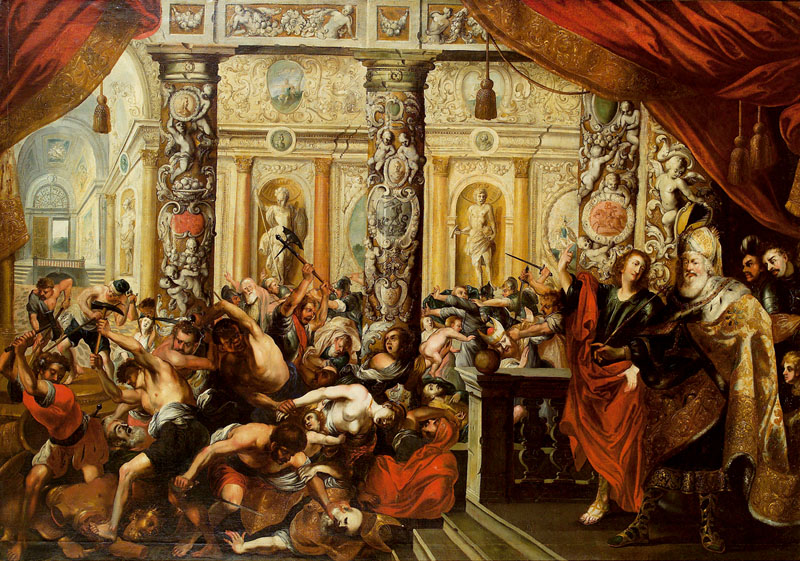The dragon[edit]
In the brief but autonomous companion narrative of the
dragon (Daniel 14:23–30), "There was a great dragon which the Babylonians revered."
[11] Some time after the temple's condemnation the Babylonians worship the dragon (presumably a snake or lizard). The king says that unlike Bel, the dragon is a clear example of a live animal.
Daniel promises to slay the dragon without the aid of a sword, and does so by baking pitch, fat, and hair (trichas) to make cakes (mazas, barley-cakes) that cause the dragon to burst open upon consumption. In other variants, other ingredients serve the purpose: in a form known to the Midrash, straw was fed in which nails were hidden,[12] or skins of camels were filled with hot coals,[13] or in the Alexander cycle of Romances it was Alexander the Great who overcame the dragon by feeding it poison and tar.[14]
Earlier scholarship has suggested a parallel between this text and the contest between
Marduk and
Tiamat in Mesopotamian mythology, where the winds controlled by Marduk burst Tiamat open
[15] and barley-cake plays the same role as the wind.
[16] However, David DeSilva (2018) casts doubt on this reading.
[17]
As a result, the Babylonians are indignant, and threaten the king if he does not give them Daniel. Daniel is handed over, and thrown into a lions' den. The prophet
Habakkuk is miraculously recruited and brought to share a meal with Daniel in the den. When Daniel is found alive in the den seven days later, the king throws his persecutors to the lions.



 www.thecoli.com
www.thecoli.com



